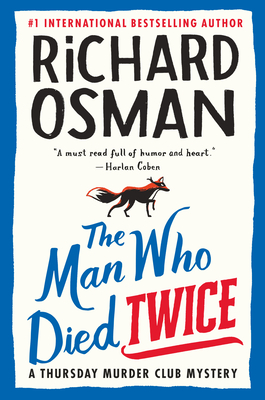 The Man Who Died Twice (Thursday Murder Club, #2) by Richard Osman
The Man Who Died Twice (Thursday Murder Club, #2) by Richard Osman Format: eARC
Source: supplied by publisher via Edelweiss
Formats available: hardcover, paperback, large print, ebook, audiobook
Genres: mystery, thriller
Series: Thursday Murder Club #2
Pages: 355
Published by Pamela Dorman Books on December 16, 2021
Purchasing Info: Author's Website, Publisher's Website, Amazon, Barnes & Noble, Kobo, Bookshop.org, Better World Books
Goodreads
It's the following Thursday.
Elizabeth has received a letter from an old colleague, a man with whom she has a long history. He's made a big mistake, and he needs her help. His story involves stolen diamonds, a violent mobster, and a very real threat to his life.
As bodies start piling up, Elizabeth enlists Joyce, Ibrahim and Ron in the hunt for a ruthless murderer. And if they find the diamonds too? Well, wouldn't that be a bonus?
But this time they are up against an enemy who wouldn't bat an eyelid at knocking off four septuagenarians. Can The Thursday Murder Club find the killer (and the diamonds) before the killer finds them?
My Review:
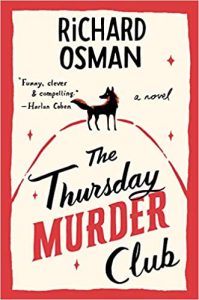 The Thursday Murder Club series is not merely a guilty pleasure of a read, it’s just the kind of guilty pleasure you feel when you filch some of the semi-sweet chips straight out of the bag while baking chocolate chip cookies. You know you’re not really supposed to, but they taste so good, sweet with just the right amount of bitter in the aftertaste that you can’t resist – and you can’t eat (or read) just one.
The Thursday Murder Club series is not merely a guilty pleasure of a read, it’s just the kind of guilty pleasure you feel when you filch some of the semi-sweet chips straight out of the bag while baking chocolate chip cookies. You know you’re not really supposed to, but they taste so good, sweet with just the right amount of bitter in the aftertaste that you can’t resist – and you can’t eat (or read) just one.
This series is the same, with its story of murders in a retirement community solved by the skills, the talent and especially the combined experience of the 70something residents, who live in a place where the appearance of an ambulance screaming through the streets is an everyday occurrence – and that the next time it might be for one of them.
We first met the members of the Thursday Murder Club in the book of the same title, as the four septuagenarians who solved Cold Cases as a hobby found themselves in the middle of a fresh case right on their doorstep.
At the end of which, their ‘leader’ Elizabeth Best received a letter informing her that a man she thought was very, very dead was not only alive but back in her life, followed by the virtual ‘mic drop’ of the book’s end.
In The Man Who Died Twice we get the full story behind that mysterious missive, a story that wends its way back to Elizabeth’s days in the spy game, combined with her personal past in the form – and eventually the body – of her ex-husband and fellow retired spy Douglas Middlemiss. (I’m sure there’s a pun in his name, but I’m not quite getting there. Or it could be one of the many, many tasty red herrings that abound throughout this story.)
Dear Old Doug needs a safe house and protection from the mob. And he wants one more chance with Elizabeth, who was most likely the love of his life even though the reverse was absolutely not true. But then, Doug always believed he was a bigger hit with the ladies than he actually was then – let alone now.
He may not have a chance with Elizabeth, but he really does need that safe house and he knows she’s still damn good at the game even if she acts like she’s no longer playing it. Although the number of favors she called in during the first book call that into question – and so does the agency she used to work for.
The thing is that Doug really did steal £20,000 in diamonds from the New York mafia by way of their, let’s call him their escrow agent and insurance broker, in Britain. There really are assassins, and that’s definitely plural, out to get both him and the diamonds. It’s not personal, it’s just business.
Whether it was a successful business or not is an entirely different question. At first it looks like at least one set of assassins succeeded, but the clues that Doug left his ex-wife about where he stashed the diamonds make it seem like maybe they didn’t.
And Doug has form for that, leading the Thursday Murder Club on a merry chase to figure out who done what to whom. Just in case that the old spy had one last game in him after all.
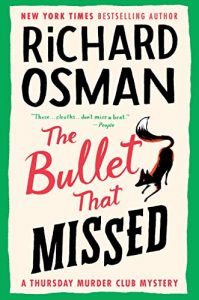 Escape Rating A-: I started this book back when it came out in 2021, but bounced off it for some reason that I absolutely cannot remember nearly two years later. The reason I can’t remember is that when I picked it up this weekend, I absolutely could not put it down. So whatever it was, it must have been both a ‘me’ thing and a ‘then’ thing, because this cozy-ish, thriller-ish mystery was a whole lot of fun.
Escape Rating A-: I started this book back when it came out in 2021, but bounced off it for some reason that I absolutely cannot remember nearly two years later. The reason I can’t remember is that when I picked it up this weekend, I absolutely could not put it down. So whatever it was, it must have been both a ‘me’ thing and a ‘then’ thing, because this cozy-ish, thriller-ish mystery was a whole lot of fun.
What makes the Thursday Murder Club so much fun is the way that the members of this little gang both are and are very much not exactly what they appear to be. They are all in their 70s, they have all lost a step or two physically, but often fewer steps than people assume from their age. And they all have hidden depths AND hidden assets that they are able to bring to bear to protect their friends and each other – and to help Elizabeth take care of the secret business she was never supposed to tell anyone about – but did anyway.
Part of the fun of this particular entry in the series is the way that Elizabeth’s adversary is also her mirror, a woman very much like herself who has also made her way into the upper echelons of the spy agencies, who came up through the ranks hearing about the ‘great Liz Best’ and wanted to best her at her own game. The way they work both in concert and in opposition, as each tries to ‘win’ a game that was never a contest, is fascinating to watch even as it throws so very many red herrings out of the basket and into the plot.
The ‘B’ plot of this book (and these do have an ‘A’ and a ‘B’ plot like a TV series that I wouldn’t be surprised to see come out of the BBC one of these days) is even closer to home as one of the Club members is attacked, and the Club pulls out all the stops to make it as right as they can – all the while acknowledging that at their age not everything can be put right, that they can only do the best they can.
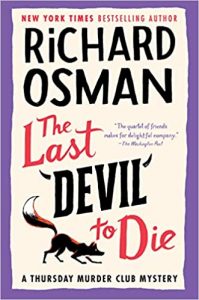 But there is a touch of bitter mixed into the sweet of a good caper well solved and justice being righteously served, and that’s in the real identity of ‘the man who lived twice’. A revelation that has nothing to do with the spy game and everything to do with being all too human.
But there is a touch of bitter mixed into the sweet of a good caper well solved and justice being righteously served, and that’s in the real identity of ‘the man who lived twice’. A revelation that has nothing to do with the spy game and everything to do with being all too human.
The Thursday Murder Club series continued with last year’s The Bullet that Missed, and I’ll be reading that sometime in the next few weeks so that I can catch up with the series in time for The Last Devil to Die, arriving – and apparently dying, late next month.

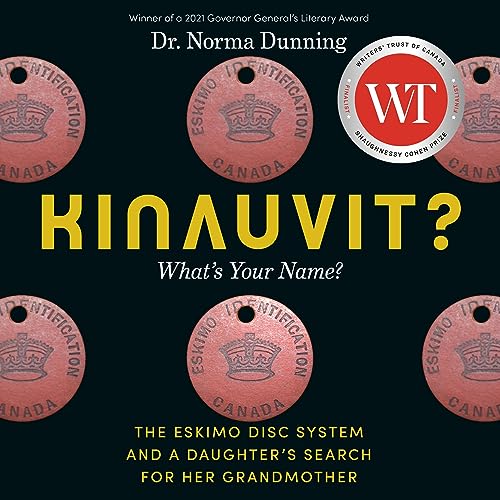 Kinauvit?: What's Your Name? The Eskimo Disc System and a Daughter's Search for her Grandmother by
Kinauvit?: What's Your Name? The Eskimo Disc System and a Daughter's Search for her Grandmother by 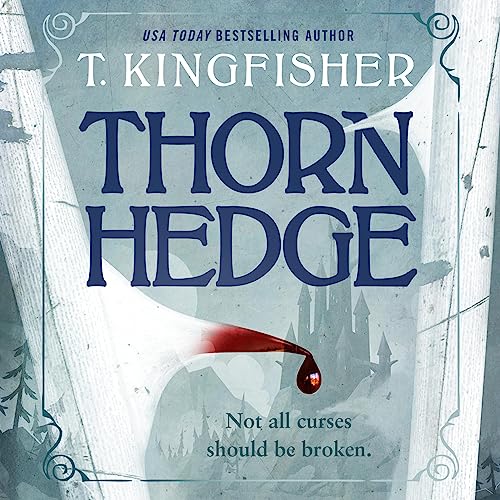 Thornhedge by
Thornhedge by 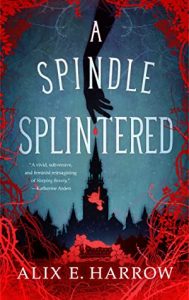 Escape Rating A: Thornhedge is a fractured fairy tale. In fact, Thornhedge and
Escape Rating A: Thornhedge is a fractured fairy tale. In fact, Thornhedge and 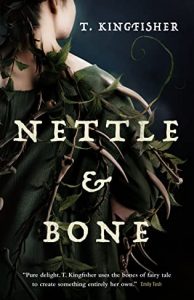 Or in my case, reread.
Or in my case, reread.  Shark Heart by
Shark Heart by 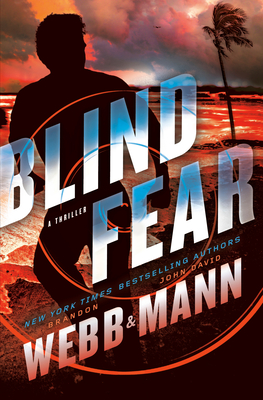 Blind Fear (Finn Thrillers, #3) by
Blind Fear (Finn Thrillers, #3) by 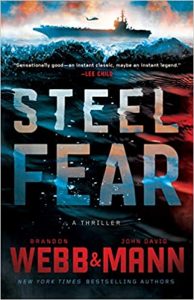 We first met Finn in
We first met Finn in 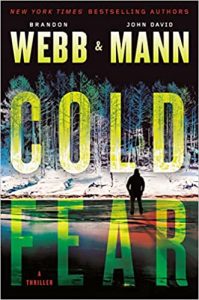 Escape Rating A-: I did get into Blind Fear, but it took me a lot longer than it did with either of the first two books in the series,
Escape Rating A-: I did get into Blind Fear, but it took me a lot longer than it did with either of the first two books in the series, 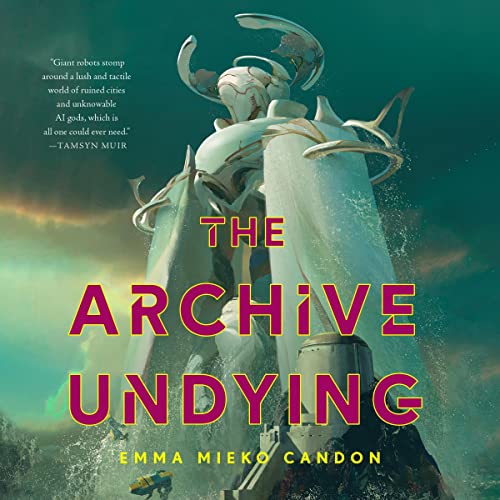 The Archive Undying (The Downworld Sequence, #1) by
The Archive Undying (The Downworld Sequence, #1) by 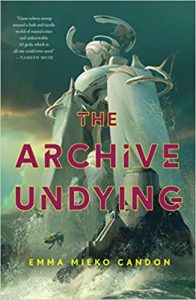 Escape Rating B: I listened to The Archive Undying in its entirety, and I have to say that its the narrator that carried me through all SIXTEEN AND A HALF HOURS. The narrator didn’t just do a good job of voicing all the many, many characters, but by literally being in their heads and not my own it allowed me to care enough about the individuals to be willing to experience the whole constantly twisting saga. If I’d been reading this as text, if I’d been in my head instead of theirs, I’d have DNF’d fairly early because the sheer number of changes in perspectives combined with unsatisfying hints of the world they occurred in would have driven me mad in short order. YMMV.
Escape Rating B: I listened to The Archive Undying in its entirety, and I have to say that its the narrator that carried me through all SIXTEEN AND A HALF HOURS. The narrator didn’t just do a good job of voicing all the many, many characters, but by literally being in their heads and not my own it allowed me to care enough about the individuals to be willing to experience the whole constantly twisting saga. If I’d been reading this as text, if I’d been in my head instead of theirs, I’d have DNF’d fairly early because the sheer number of changes in perspectives combined with unsatisfying hints of the world they occurred in would have driven me mad in short order. YMMV.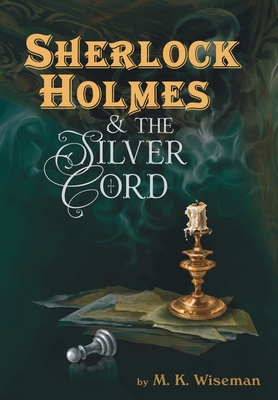 Sherlock Holmes & the Silver Cord by
Sherlock Holmes & the Silver Cord by 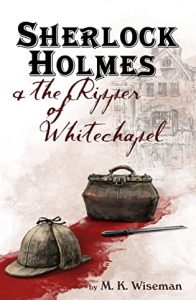 Which goes a long way towards explaining why this story, like the author’s previous forays into Holmes pastiches,
Which goes a long way towards explaining why this story, like the author’s previous forays into Holmes pastiches, 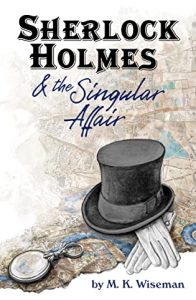 In the first outing,
In the first outing, 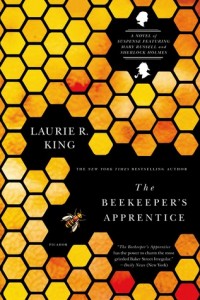 We don’t like to see our heroes stumble, and this is a story where Holmes is definitely stumbling – if only inside the confines of his own head. But seeing him trip over his own mental, spiritual and even moral feet makes him more human. Whether that’s a good take on the character or merely an unsettling one is left in the mind of the reader.
We don’t like to see our heroes stumble, and this is a story where Holmes is definitely stumbling – if only inside the confines of his own head. But seeing him trip over his own mental, spiritual and even moral feet makes him more human. Whether that’s a good take on the character or merely an unsettling one is left in the mind of the reader.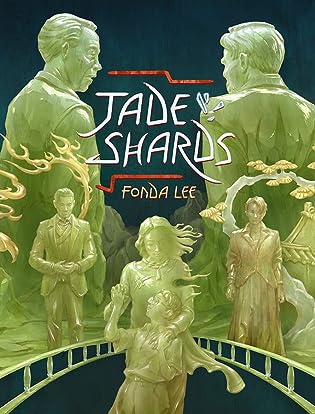 Jade Shards (Green Bone Saga #0.75) by
Jade Shards (Green Bone Saga #0.75) by 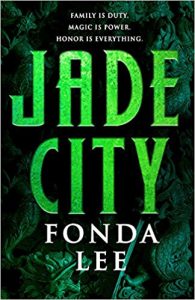 Jade Shards isn’t a single story in the world of the
Jade Shards isn’t a single story in the world of the 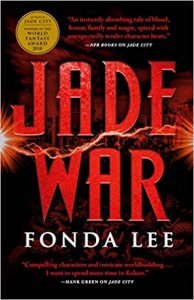 Ayt Mada was the powerful antagonist of the entire saga, but in that saga, she stood alone as her story does in this collection. The other stories dive deeply into the Kaul family, just as the other three stories here give us a peek into the early days of the three members of the Kaul family who drive the
Ayt Mada was the powerful antagonist of the entire saga, but in that saga, she stood alone as her story does in this collection. The other stories dive deeply into the Kaul family, just as the other three stories here give us a peek into the early days of the three members of the Kaul family who drive the 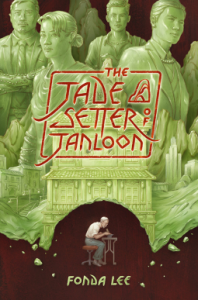 Escape Rating A+: I’m giving this one an A+ because that’s how deeply I escaped back into the world of the
Escape Rating A+: I’m giving this one an A+ because that’s how deeply I escaped back into the world of the 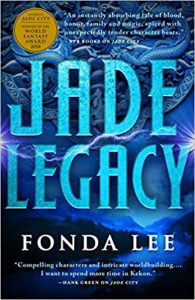 And neither was the author, as she admits in the notes for Jade Shards that these stories are a case of her writing fanfiction in the universe that she created. IMHO it’s a universe that is made even richer by these portraits of the clan leaders as young men and women. So I’m glad she was able to put these out into the world and sad that it looks like these will be the last.
And neither was the author, as she admits in the notes for Jade Shards that these stories are a case of her writing fanfiction in the universe that she created. IMHO it’s a universe that is made even richer by these portraits of the clan leaders as young men and women. So I’m glad she was able to put these out into the world and sad that it looks like these will be the last.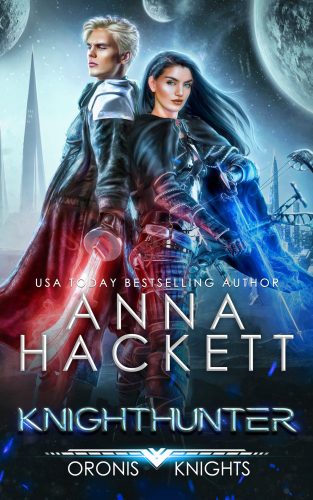 Knighthunter by
Knighthunter by 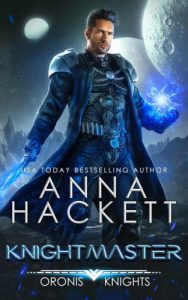 Escape Rating A-: In terms of the overarching story of the Oronis vs. the ‘Big Bad’, in this instance the Gek’Dragar, Nea and Kaden’s pursuit of a series of fleeing Gek’Dragar ships through Gek’Dragar space gives the reader a tour of the galaxy and a whole host of reasons to understand why the Oronis have such a huge and justified hate-on for their scaly enemy.
Escape Rating A-: In terms of the overarching story of the Oronis vs. the ‘Big Bad’, in this instance the Gek’Dragar, Nea and Kaden’s pursuit of a series of fleeing Gek’Dragar ships through Gek’Dragar space gives the reader a tour of the galaxy and a whole host of reasons to understand why the Oronis have such a huge and justified hate-on for their scaly enemy.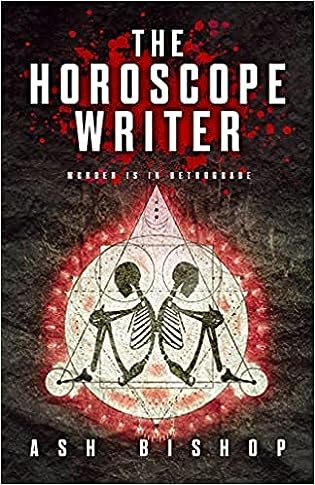 The Horoscope Writer by
The Horoscope Writer by 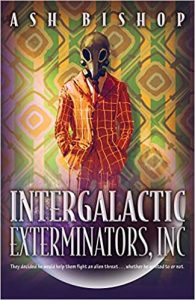 Escape Rating B-: I picked up The Horoscope Writer because I reviewed the author’s debut novel,
Escape Rating B-: I picked up The Horoscope Writer because I reviewed the author’s debut novel,